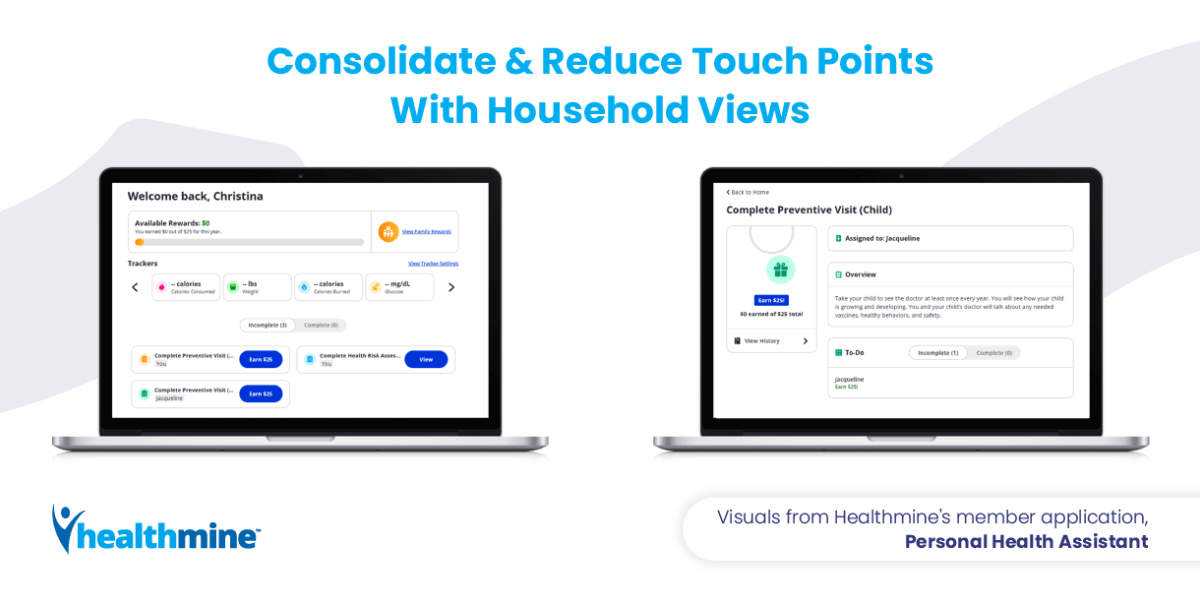ARTICLE
Improving Engagement in Prenatal & Postpartum Care with Digital Tools

Pregnancy can be both a wonderful and stressful time for expecting mothers. They are often juggling multiple priorities, ranging from determining how long they can work, to finding clothes to fit their changing bodies, to preparing a space for a newborn. On top of all this, women need to receive appropriate prenatal and postpartum care to ensure positive health outcomes for themselves and their baby—but for Medicaid populations, these vital medical activities can fall by the wayside when compared to other demands, such as accessing healthy food or paying rent.
Health plans have identified the importance of providing expecting mothers with the right resources and communications to improve engagement with their healthcare, yet there are still significant challenges in the Medicaid space. Determining which members of diverse populations are pregnant and need additional resources to get care requires a large data lift and aggregation of difficult-to-access information. Further, once pregnant members are identified, there are limitations to the ideal outreach and its impact.
The challenges are not insurmountable, however. Digital adoption rates have risen drastically since the start of the COVID-19 pandemic, with consumers leaning heavily into products or services that are partially or fully digitized. By incorporating digital tools into your member engagement strategies, you can develop more coordinated and personalized communications that actively close prenatal and postpartum care gaps among Medicaid member populations.
Revaluate How You Communicate with Members
Medicaid health plans have traditionally relied on phone calls and mailings to contact pregnant members and connect them with necessary resources and timely and appropriate care. This approach will always be a cornerstone of your strategies, especially among lower-income beneficiaries and rural areas where the digital divide is at its greatest, but digital communications offer more opportunities for engaging members, especially when your outreach aligns with a member’s lifestyle or needs.
Members with busy schedules—such as expecting mothers—may prefer emails, text messages, SMS, or in-app notification, and giving them the options to choose how you communicate with them can reduce abrasion and increase engagement. This comes with the added benefit of lowering the cost of IVR and physical mailings for members who are more digitally inclined.
Using a multimodal approach, you can meet your members where they are and connect them with the relevant prenatal and postpartum care they need.
Use (And Refine) HRAs to Collect Member Data in Real-time
Digital outreach also opens up more opportunities to learn about your members. With a well-crafted digital Health Risk Assessment (HRA), you can collect data about member’s health conditions, lifestyle choices, and family health history, including whether any beneficiaries are pregnant or have recently given birth. Digital HRAs let you go a step further by enabling you to collect and analyze member responses in real-time to develop immediate insights and interventions.
If you are already aware of which members are pregnant, you can also fine-tune a digital, pregnancy-specific HRA, which will give you more insight on any risks that may be associated with the pregnancy. For a Medicaid population, pairing questionnaires and surveys with rewards is extremely impactful—Healthmine research shows that offering members a $25 reward can increase HRA completion rates to up to 76%.
In addition to incorporating pregnancy-specific HRAs into your digital outreach strategy, incentives should also be tailored to expecting mothers’ needs. Gift cards or maternity specific merchandise can be rewarded as members complete necessary prenatal visits that improve health outcomes and also help to prevent unnecessary health care costs. For members, gift cards or merchandise can provide much needed relief for a population that often struggles to maintain necessities while increasing engagement with preventative services.
However you structure your rewards and incentives program, it is vital to incorporate rewards into HRAs, annual wellness visits, and other vital data touch points to develop a better understanding of your members’ situations.
Giving Mothers Ownership Over Their Health
Transitioning to a digital strategy for prenatal and postpartum care will not only improve the efficiency and effectiveness of your engagement efforts, but it can also provide the member with a greater sense of ownership over their health and wellness.
Through a member-facing application or web portal, your members will be able to complete pregnancy-specific questionnaires and receive recommended health information when it is convenient for them, which may be in the early hours of the morning or late at night. In addition, if you enable members to see household views and healthy activities for beneficiaries, parents or legal guardians can better manage the health of dependents from a single, centralized platform.

Connect with the Right Digital Partner
Now more than ever Medicaid plans need to review their approach for reaching members. Consider adopting digital solutions that will better meet the needs of your members and actively motivate them to make healthier decisions, while maximizing and offering the ability to measure your quality improvement strategies more effectively.
At Healthmine, we offer the ability to ingest your algorithm to identify pregnant members, or leverage our proprietary algorithm developed by our experienced epidemiologist to ensure timely and relevant communication to members. For more information on how to plug into the digital surge and improve member experience, feel free to contact me at james.haskins@healthmine.com.
